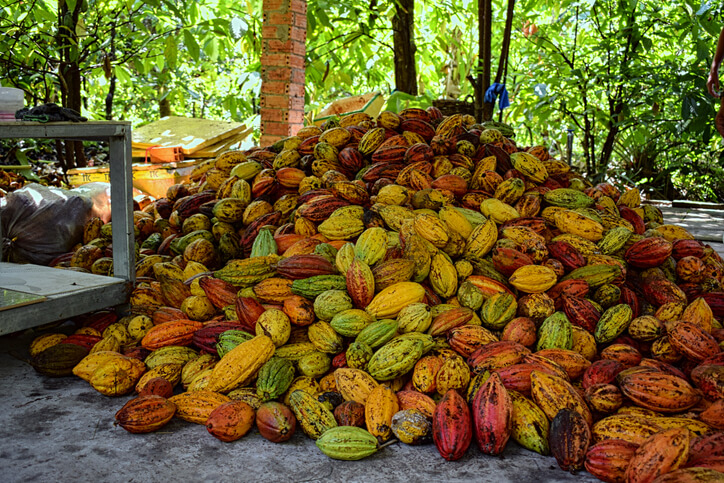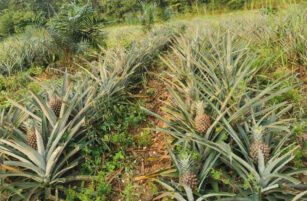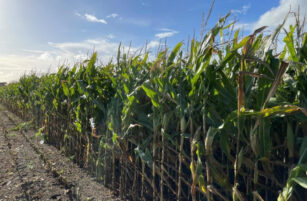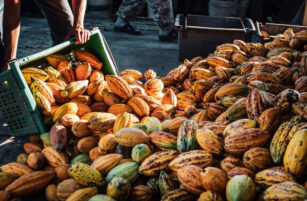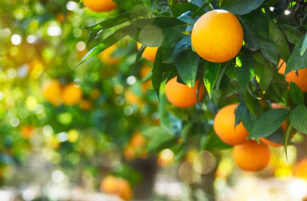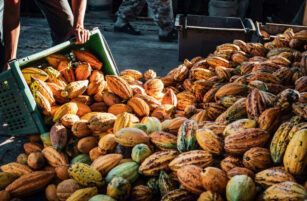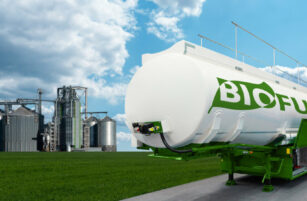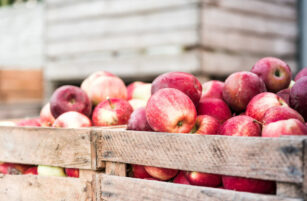Insight Focus
Weather is a major factor in the volatility of cocoa prices over the past year or so. We take a look at the optimal conditions for growing cocoa and the factors that need to be monitored to predict a str2. Temperaturesong crop.
Weather Adds Price Volatility
Cocoa is a sensitive crop that can only grow in a narrow band within 10-20 degrees of the equator called the cocoa belt. Think hot temperatures, high humidity, constant rain, shade, protection from wind, and the nurturing embrace of a rainforest environment – that’s the natural home of cocoa.
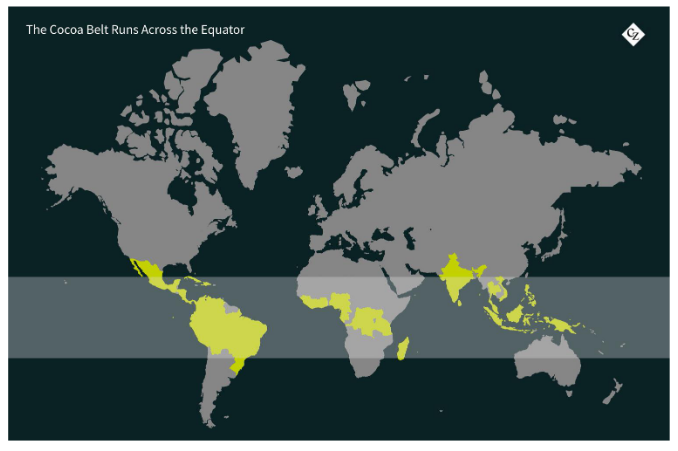
The most optimal conditions for high productivity cocoa farming are areas with lower rainfall and irrigation systems. Unfortunately, smallholders who grow 95% of the global crop cannot afford irrigation so rely on the vagaries of the weather.
What Can Weather Tell Us About Cocoa Price Risk?
El Nino happens every two to seven years and brings dryer and warmer weather conditions to main cocoa growing areas, while La Nina does the opposite. As indicated earlier, temperature and rain are critical contributors to a successful crop. Extended periods of dry spells or drought can severely affect cocoa production. The 2023/24 crop year was an El Nino year, and it is assumed to have contributed to the shortfall in the West African crops.
La Nina can reduce the temperature and increase rainfall on the African continent, which results in conditions that foster diseases in the crop.
Cocoa is a plant native to the high Amazon, and it develops thanks to rainfall throughout the year. However, high humidity is the cause of a high incidence of diseases, such as Phytophthora in Africa and Monilia and Witch’s Broom in the Americas.
Optimal Growing Conditions
Optimal Growing ConditionsCocoa cultivation requires five main things to flourish.
1. Direct Solar Radiation
Cocoa originated in the upper Amazon, where direct solar radiation is around 1,100 kWh/m2. Here, high cocoa productivity is reported.
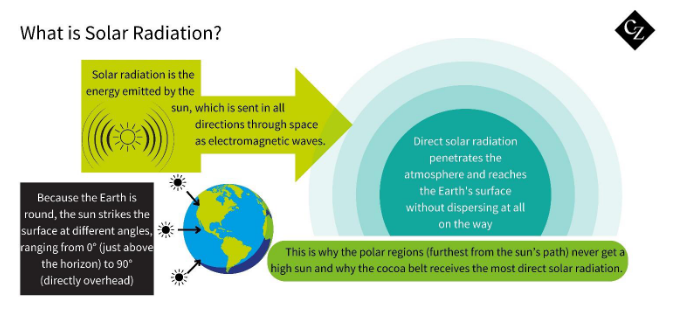
2. Temperatures
Temperatures of between 21°C and 32°C are needed. Above 35ºC the cocoa tree begins to stop its physiological process of photosynthesis and its productive capacity halts. Climate change is projected to increase maximum temperatures in the coming years. On the other hand, temperatures below 17ºC also affect the physiology of the plant, which begins to shed flowers and abort small-stage fruits.
3. Precipitation
Cocoa is a plant native to the high Amazon, and it develops thanks to rainfall throughout the year. However, high humidity is the cause of a high incidence of diseases, such as Phytophthora in Africa and Monilia and Witch’s Broom in the Americas.
Annual rainfall above 1,000mm in six months provides favourable conditions for the development of diseases. On farms with little rainfall — between 400mm and 600mm annually — disease control is very effective. However, then these farms then require irrigation, which the typical smallholder cannot afford.
4. Evaporation
Evaporation is directly correlated with solar radiation. The greater the radiation, the greater the evaporation. Crops all have an irrigation coefficient (Kc), measured on a scale of 0 to 1 (although the Kc can exceed 1). A plant with a higher crop coefficient needs more water, and a plant with a lower crop coefficient needs less water.
The Kc of cocoa is 1, on the higher end of the spectrum, which means that a daily layer of water equivalent to evaporation must be applied. Irrigation systems can replace the amount of water lost due to evaporation.
5. Relative Humidity
This correlates with all climatic variables. Since cocoa is a crop that originates where rainfall occurs all year round, it also requires a relatively high degree of humidity all year round. The irrigation systems also supply this required relative humidity.
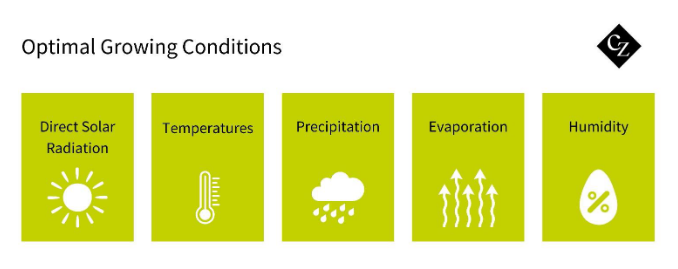
Impact on Cocoa Prices
Weather plays a critical role in cocoa crop forecasting due to its direct impact on various stages of cocoa growth and development.
As a result, cocoa crop forecasters monitor the following weather influences:
1. Growing Season Conditions
During the growing season, which typically lasts several months, consistent weather patterns are crucial. This includes adequate rainfall distributed evenly throughout the season and temperatures within the optimal range as described earlier. Cocoa trees require specific conditions to flower, set fruit (pods) and develop beans 4What Can Weather Tell Us About Cocoa Price Risk?
2. Rainfall Patterns
Rainfall is essential for cocoa tree growth, especially during critical periods such as flowering and pod development. Irregular or inadequate rainfall can lead to reduced yields and affect bean quality. Forecasting accurate rainfall patterns helps predict potential impacts on cocoa production.
3. Temperature Extremes
Cocoa trees are sensitive to temperature fluctuations. Extreme heat or cold can disrupt flowering and fruit set, impacting bean development. Monitoring temperature trends helps forecasters anticipate potential stress periods for cocoa trees.
4. Humidity and Disease Risk
High humidity levels can promote fungal diseases, as described earlier, which can devastate cocoa crops.
Monitoring humidity levels helps predict disease outbreaks and plan preventive measures.
5. Climate Change Considerations
As climate change alters weather patterns, forecasting becomes more challenging. The increasing frequency of extreme weather events, as well as shifts in rainfall patterns and temperature changes can have unpredictable effects on cocoa production. Forecasting models need to account for these changingconditions to provide accurate predictions.
6. Long-Term Trends
Cocoa crop forecasting also considers long-term weather trends. Historical weather data helps identify patterns and trends that can influence future crop yields. This historical context is valuable for understanding climate variability and its impact on cocoa farming regions.
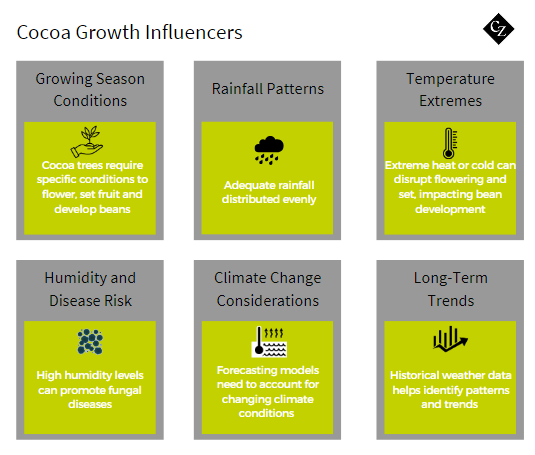
In essence, weather forecasting for cocoa crops involves integrating meteorological data with agronomic knowledge to predict how weather conditions will influence cocoa growth, development and yield. Accurate forecasts support farmers, traders, and policymakers in making informed decisions to manage risks and optimize cocoa production.
The cocoa market reacts to negative or positive weather events in line with the forecasters’ predictions of the outcome of those events. The actual outcome can only be determined after the crop has been harvested so the forecasters reliance on the weather data as well as pod counting data is critical.
